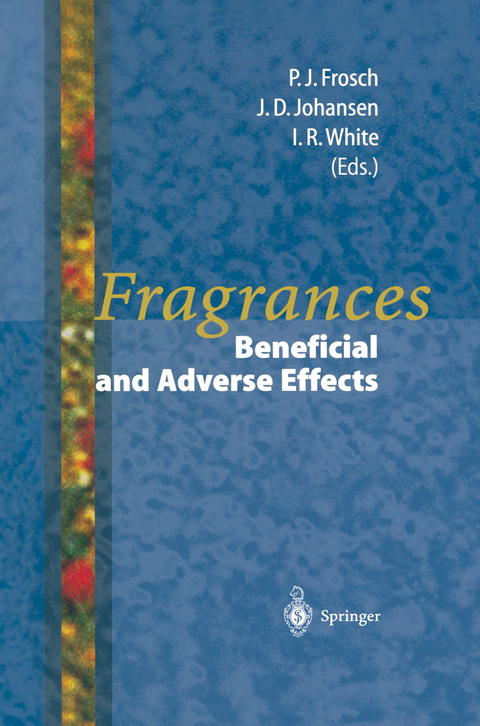
Fragrances
Springer Berlin (Verlag)
978-3-642-80342-0 (ISBN)
I: The Basics.- The Art of Creating a Perfume.- Cerebral Representation of Odour Perception.- II: Beneficial Biological Effects.- The Structure, Origin and Function of Human Axillary Odours.- Communication by Odour-The Influence of Body Odour on the Attractiveness of Men.- Orientation of Insects in a Multitrophic System: The Role of Fragrances.- Chemical Signals During Raids by the Robber BeeLestrimelitta limao on Other Stingless Bee Nests (Hymenoptera, Apidae, Meliponinae).- III: Adverse Effects in Humans.- Molecular Aspects of Fragrance Sensitisation.- Identification of Fragrance Sensitizers by QSAR.- Fragrances as a Cause of Contact Dermatitis in Cosmetics: Clinical Aspects and Epidemiological Data.- How Do We Test for Fragrance Allergy?.- Fragrance Hypersensitivity and Its Control.- Are Major Components of Fragrances a Problem?.- Quantitative Aspects in Patch Testing and Usage Tests.- d-Limonene-An Old Perfume Ingredient Introduced as a "Natural" Solvent in Industry: Is There a Risk of Sensitization?.- of Sensitizing Fragrance Materials in Natural Ingredient Based Cosmetics.- RIFM Activities in the Safety Assessment of Systemic Effects of Fragrance Materials.- Absorption of Fragrance Ingredients Using In Vitro Models with Human Skin.- Synthetic, Musk Fragrances in Human Fat and Their Potential Uptake by Dermal Resorption.- IV: Safety Assessment-Predictive Assays for Irritation and Sensitization.- A Reappraisal of the Guinea Pig Maximization Test.- The Hydroxycitronellal Story: What Can We Learn from It?.- The Value of Animal Assays and the Quenching Phenomenon.- In Vitro Phototoxicity Tests for Fragrances.- RIFM Activities in the Safety Assessment of the Dermal Effects of Fragrance Materials.- V: The Producer's View.- The Producer's View: Do We WorryAbout Adverse Effects?.- The IFRA Guidelines.- Fragrances and Environmental Issues: A Case Example of Environmental Risk Assessments of Ingredients.- Fragrances-Future Aspects.
| Erscheint lt. Verlag | 14.12.2011 |
|---|---|
| Vorwort | H. Möller |
| Zusatzinfo | XVIII, 234 p. |
| Verlagsort | Berlin |
| Sprache | englisch |
| Maße | 155 x 235 mm |
| Gewicht | 399 g |
| Themenwelt | Medizin / Pharmazie ► Medizinische Fachgebiete ► Dermatologie |
| Schlagworte | allergy • contact dermatitis • Cosmetics • Dermatitis • Dermatology • Skin |
| ISBN-10 | 3-642-80342-3 / 3642803423 |
| ISBN-13 | 978-3-642-80342-0 / 9783642803420 |
| Zustand | Neuware |
| Haben Sie eine Frage zum Produkt? |
aus dem Bereich


